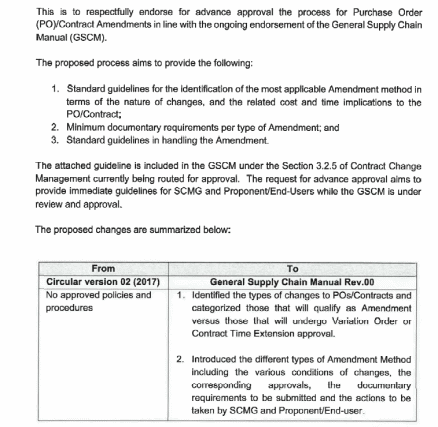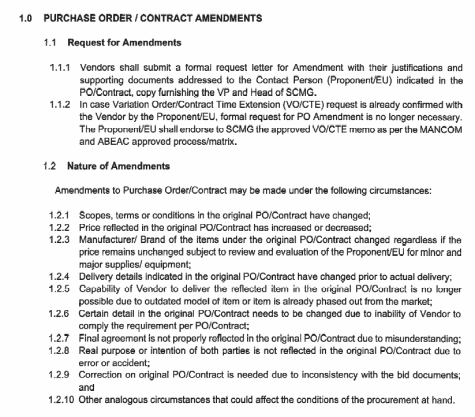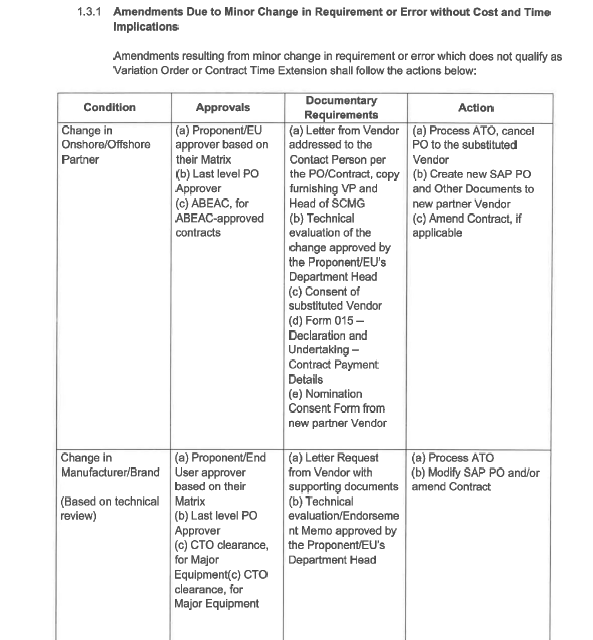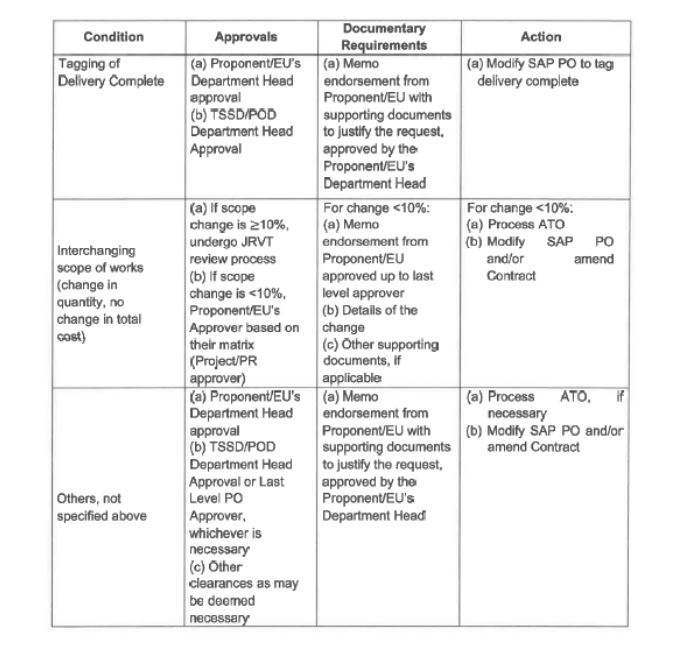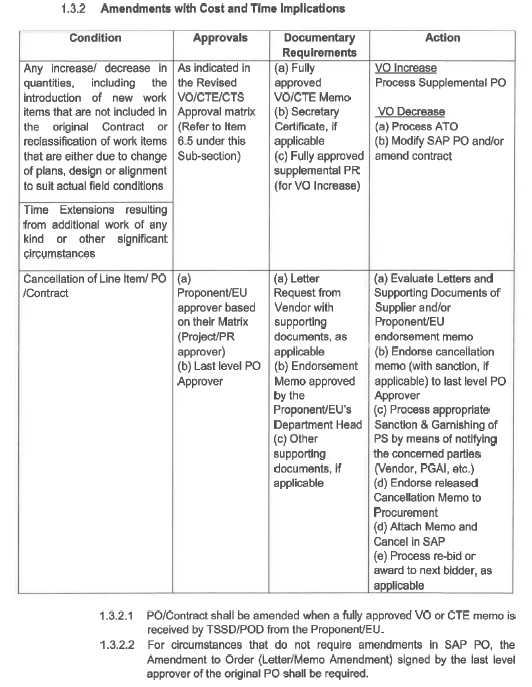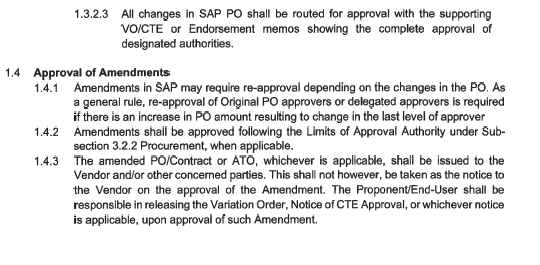Introduction
There are three key organizational components in electric utilities: generating (power plants), transmission (high-voltage bulk power between utilities), and distribution (low-voltage power to end-users). According to Short (2014), power generation, transmission, distribution, and sale to the general public and industry are all covered under the umbrella term of the electric power industry. The generated power is taken to specific power stations where different lines are connected to supply various users such as homes and industries based on the load requirements through dedicated distribution lines (Scholar Schools, n.d.). This chain of operations means various units are connected and depend on each other for their service delivery, which calls for competent organizations to take the initiative of ensuring smooth operation in the sector. The Republic Act No. 9136, also known as the Electric Power Industry Act (EPIRA) provides that there must be a promotion of competition, encouragement of market development, securing of consumer choice, and penal repercussions for the abuse of market power in the restructured electricity sector. The EPIRA resulted in dividing the National Power Corporation’s generation and transmission duties, transferring transmission function to the National Transmission Corporation (TransCo).
A consortium comprising Monte Oro Grid Resources Corp., Calaca High Power Corporation and the State Grid Corporation of China as its technical partner was awarded a 25-year concession to operate the Philippines ‘ power transmission network in 2007. The National Grid Corporation of the Philippines (NGCP) began officially operating in 2009 as the official power transmission service provider (Corporate Profile, 2021). The NGCP was granted a franchise under Republic Act No. 9511, titled “An Act Granting the National Grid Corporation of the Philippines A Franchise to Engage in the Business of Conveying or Transmitting Electricity Through High Voltage Backbone System or Interconnected Transmission Lines, Substations and Related Facilities, and For Other Purposes.” It was required to build, install, finance, manage, improve, expand, operate, maintain, rehabilitate, repair, and refurbish the grid. The division of the original electricity production and distribution resulted in some significant delays in the completion of various projects due to the issues in one handler, which affected the other handlers along the distribution chain. This paper aims to improve the existing process of handling Contract Time Extension (CTE) and Variation Order (VO) of Operations and Maintenance O&M projects.
Company Background and Operations
The National Grid Corporation of the Philippines plays a crucial role in linking has the crucial power generators and distribution utilities ensuring electricity delivery to all the consumers. Its network of interconnected transmission towers and substations provides the highway for electric transmission from various energy sources to distribution utilities and electric cooperatives, and finally to households. Operations and Maintenance (O&M), Systems Operations (SO), and Planning and Engineering (P&E) comprise the Technical Group of the organization and they are considered the core group of NGCP. Figure 1 shows the company’s Table of Organization and how the core group is interrelated with the other support groups.
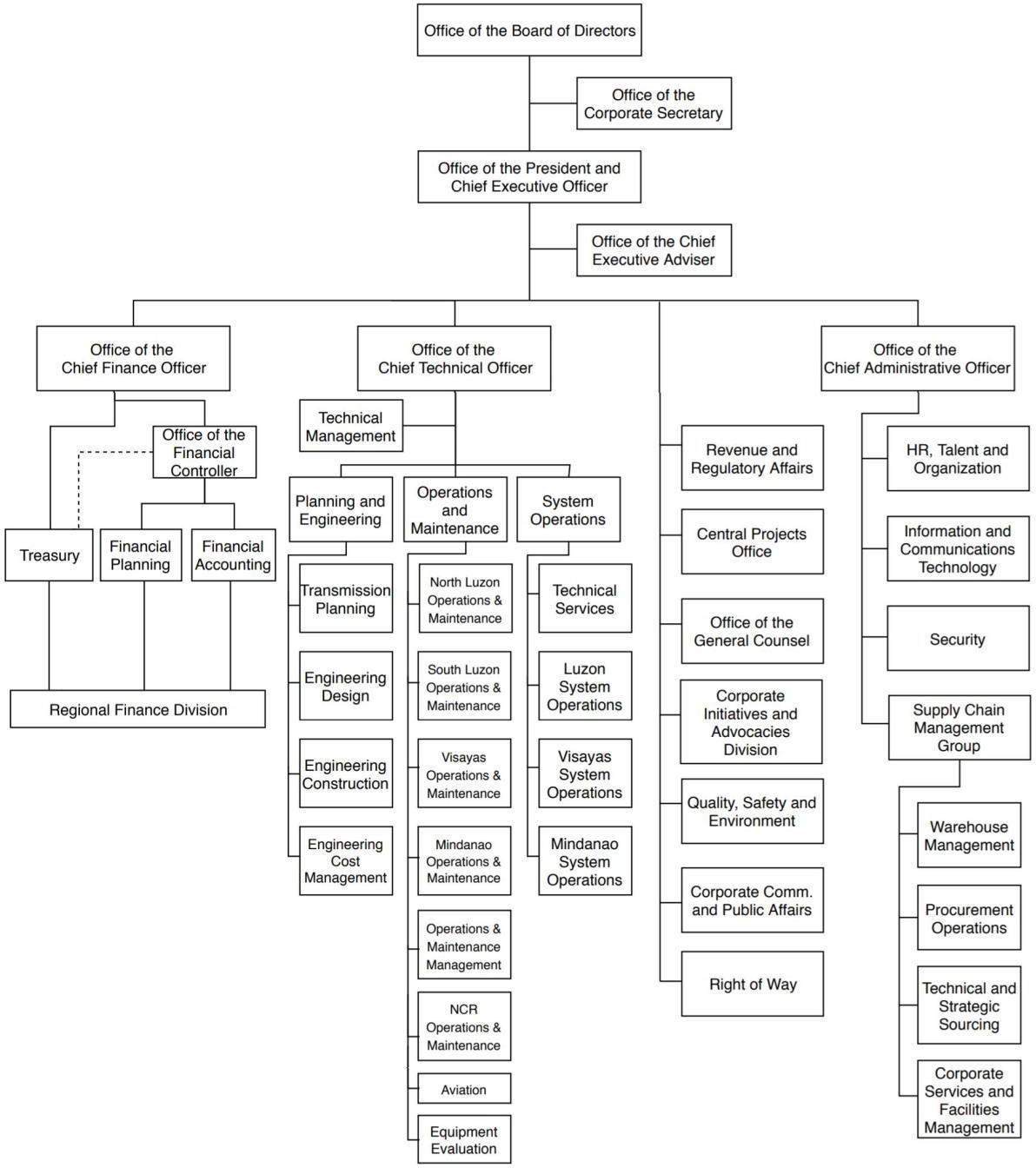
The construction of additional transmission lines and the expansion of substation capacity are both equally significant as the expansion of electricity supply. NGCP guarantees that the grid is ready when new power plants come online and when demand for electricity in a specific area increases by anticipating these situations and installing new facilities to meet the needs of the grid. P&E objectives are those that pertain to the planning and engineering group. Figure 2 below represents the relevant business processes involved in the production of value by NGCP. This business process map shows the relationship between NGCP’s standardized methodologies, steps, and inputs which ultimately result in the desired bottom line of organizational efforts.
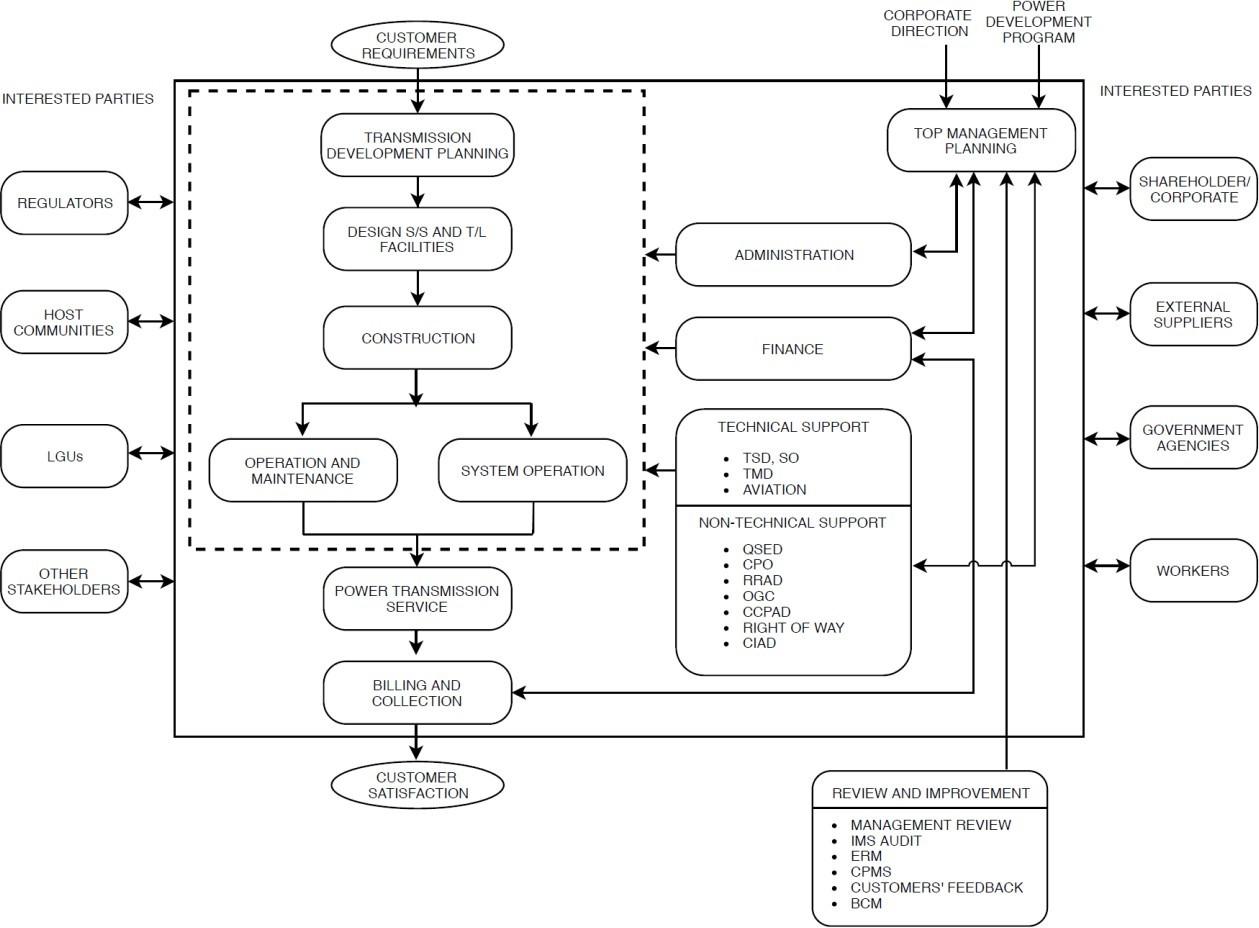
Project management and implementation are crucial factors in the success of any organization that produces goods and services for its consumers. The NGCP implements and manages its projects in line with the principles of the supply chain. The corporation allows its end users to propose projects via Purchase Request (PR). The company evaluates the submitted projects and approves those that are relevant for further consultations and deliberations. The PRs are procured by the Technical Purchasing Department (TPD) thru bidding or negotiated contracts after they have been approved by the NGCP in both cases, a review of the technical requirements and other tender documents will be done in the Technical Evaluation (TE) process wherein clarifications from bidders will be cleared by the Technical Evaluators.
The discussion in this evaluation phase will revolve around the three most important aspects of the project including scope, time, and cost. After a bid, the offer has been secured or the negotiated bidder and evaluators agree, a Purchase Order (PO) is released to the contractor for signing and this serves as the official contract between the contractor and NGCP and also signifies the implementation of the project.
Gap Analysis
Project management is a crucial aspect of the development of any economy. Some of the major national projects include urban design and contraction, roads, railways, and electrification. Electrification is a major project because almost all aspects of the economy require power at some point. Moreover, it also involves complex yet interconnected processes, where a delay in one affects the rest. In the Philippines, there are several cases of project timetable delays, cost overruns, and substandard work. The delays primarily include insufficient data, which can be obtained when there have been enough examples of similar projects in the past or preliminary surveys. Either case could be due to a limited time or funds and an unsatisfying level of expertise and technology (La Viña et al., 2018). The issues can also result from inexperience with local conditions among design engineers or international consultants. The survey’s weak spots are mostly during the project identification, common discrimination, and exploratory phases.
In most cases, the initial project design is marred with several challenges, especially in understanding the flow of work. Several projects in Philipines have stalled due to challenges in finding the best approaches or processes to realize the project goals. Some of the successful major projects in other countries have been built on the outcomes of surveys and data modeling. These assessments are conducted to secure financing for projects, including those for foreign technical support. However, money for the project is often not given at this point, and monies available for surveys are frequently insufficient or nonexistent. The sole funding source for the study is the local recurring budget, which is often limited (Arefeen et al., 2021). If these surveys are insufficient, projects cannot be recognized efficiently, their priorities cannot be allocated precisely, and they cannot be completed as desired by the project lead management teams. The current study addresses these gaps and thus recommends the best approaches to be taken to ensure that NGCP can meet its project goals from the start to the end and to continue providing its services to the public.
Problem Statement
The major goal of any company or government institution with a specific project deliverable is to ensure competition of the tasks. However, most of these objectives fail because of system issues, which result in stalling of tasks. Some of these challenges result in poor planning or a lack of essential resources. Although policies and procedures are critical components of every organization, impractical or unnecessarily complained procedures can defeat the purpose of developing regulations to optimize efficiency. The current CTE and V.O. procedures cause increasing needs for change because some of the procedures are redundant and time-consuming. The provisions also cause confusion in CTE procedures and sometimes take too long and overlap with the following and upcoming project of the contractor. This research paper aims to improve the existing process of handling Contract Time Extension (CTE) and Variation Order (V.O.) of the O&M project.
Methods
The current research is meant to give a better understanding of the Contract Time Extension (CTE) and Variation Order (V.O.) of the O&M project and to give recommendations to help solve the most common issues facing NGCP’s contracts. This section details the procedures used to obtain the data used in the study and their reliability and validity in the research area. The study mainly concentrated on finding relevant information in the project management practices in Phililipnes.
The current research focuses on collecting data from existing reports and publications and uses such findings to address present objectives. The secondary sources used in the mainly organizational reports are in line with project management. These are crucial resources because they present to the current research a wealth of information regarding practices that led to the success or failure of past projects. The lessons learned are then used to inform the current study’s recommendation. Therefore, the current research takes the form of a descriptive study, which reflects on the information received from the resources used in the research.
Research Approach and Design
The present study used as many resources as could be obtained by the researcher to help inform the recommendations of the current research. The use of an unlimited number of articles and publications was essential in ensuring the researcher gather as much information as possible. In addition, this was considered crucial to ensure the study’s findings are credible, and its recommendations worth considering. The research used the convenience document sampling method, which involved using already established publications from various databases. The databases used provided a lot of organized data, which helped inform the current research. The current research utilized secondary data instead of primary data because of their ease to gather and use compared to primary data.
The current research examined empirical and theoretical studies related to project management. The study utilized systematic search in reviewing publications relevant fields to the topic and published in journals and government databases. Also, the research involved the search for information from articles that were not peer-reviewed, but these resources were mainly obtained from business articles or government sites. During the search, only English was used for articles that contained the major keywords used in the present research. The study also considered all the types of studies conducted in various relevant fields, editorials, commentaries, organizational reports, expert opinions, and conference outcomes that emphasized project management, Contract Time Extension (CTE), and Variation Order (V.O.) of the O&M project. Moreover, some non-scholarly articles with primary data were also considered critical sources of information for the current research, thus enriching the information obtained from peer-reviewed articles.
The current research used systematic theme identification to extract as much as possible from the various sources used in the study. The search strategy involved reviewing existing literature on improving the process of handling contract time extension and variation order of o&m projects in the Philippines and other countries. The search involved databases from the roads and bridge construction, railway construction, airports, electrification, and information technology infrastructure. The databases searched included peer-reviewed journals, Harvard-reviewed publications, other dissertations, and other academic databases. The databases searched led to other critical information sites such as the official government of the Philippines websites, ABI Inform Global, Business Source Premier, EconLit, Emerald, Academic Search Premier, Google Scholar, Science Direct, Web of Science, among other sources that could help achieve the objective of the research. The keywords used in the search for resources include “project management,” “project success,” “leadership in project management,” “contract time extension,” “variation order,” “government leadership,” “parastatal projects management,” and “project implementation.” Some resources were not directly linked with the keywords, but they were used since they were critical in understanding the study. Moreover, the search was conducted continuously until its study was convinced that the information obtained was sufficient to inform the research and build a strong discussion.
The current research utilized various processes to identify and access all the information that is relevant for the study from the university library as well as from the databases available online. The initial steps involved the identification of different databases named earlier. After identifying the databases, the search tool in the databases was used in each case to search for documents that contained the words in the search box. In each database, there were filters so that the search results could only be obtained from either online journals or other articles as identified by the limiters used. Library materials such as books and articles were located by accessing particular databases or grouped databases based on their alphabetical order. The approach ensured locating all the articles that began with the specified letter. Resource areas such as Google Scholar have an off-campus proxy, which enabled the researchers to set various links to the library, thus making it easier to search the articles. The data collected are the turnaround time for the CTE and V.O. requests of the contractors. NGCP’s interaction with the government contracts is presented as an example of the multilayered contacts that such organizations providing essential services need to adhere to the CTE and V.O. provisions justifying the need for procedure optimization.
In the current research, the data used was collected from both quantitative and qualitative sources, but only the qualitative method was used in the analysis of secondary data. The analysis improved the study’s validity and reliability, making it suitable to make fact-driven recommendations. As noted earlier, a thematic approach was used in this study, indicating that the data gathered were divided into two major themes, including contract time extension and variation order and changes needed in the monitoring systems. The specific data gathered around these two themes included contract time extension and variation order and the needed changes in the monitoring systems.
In the CTE and V.O, if the amount of extra work or other special circumstances happen, that reasonably entitles the Construction company to supplement contract time. The contacting company shall determine the amount of such extension provided. However, there should be no obligation to consider any claim for an extension of time unless the contractor makes such assertion before the expiry of time and within thirty calendar days after such work has been started immediately or after the circumstances changed. Failure to provide such notification will constitute a waiver of any claims by the Construction company (Saculsan 2018). PPA shall investigate the reasons and degree of the delay and extend the contract time for completion of the contract work if the facts warrant an extension in PPA’s judgment.
Contract time is extended for unworkable days deemed unfavorable for the prosecutors the appear to work at the site, based on the actual project requirements. Extension of time frame is always more than the number of unworkable days predefined by the PPA and for the comparable period of delay caused by major calamities. in Philipines, such as extremely counterproductive typhoons, floods and earthquakes, and outbreaks, as well as for causes such as achieved using various on time, shortages of construction materials (Saculsan 2018). General labor disputes and problems with law and order that disrupt construction operations without the company’s fault may well be aspects and dimensions grounds for a contract extension. The extension can be granted if it is clearly and openly felt and certified by appropriate authorities such as the DTI, DOLE, DILG, and DND, among others(Amongo et al., 2021). Furthermore, any request by the contracting company for contract extension must be accompanied by the written permission of bondsmen and presented to the PPA for consideration.
In such cases, all complex tasks necessitate proven project management approaches to optimize the collective bargaining agreement for monitoring and documentation for CTE and V.O. purposes. The executive team in the procuring entity, technologist, and construction manager cooperatively should monitor the agreement’s actual physical and monetary progress from a decentralized network against the contracted physical and financial schedule (Tio 2021). The contract monitoring and documentation may require the contractor to hire qualified construction project specialists to train and oversee the project’s progress, such as PMI-certified engineers. Numerous program management equipment and software applications are beneficial for contract management teams.
The present research was conducted based on the understanding that quality assurance is of great essence, whereby the selected articles were thoroughly scrutinized with the highest precision possible in addressing different themes of the study. The tool used in the quality assessment for review integration was utilized to ensure that the assessment was achieved. Specifically, sampling method, type of study, data collection methods, and data analysis techniques ensured that the current study used quality sources that resulted in quality findings. Consequently, the selected samples were considered the best available resources to help achieve the objective of the study.
Before commencing the current research, permission was sorted and obtained from the university department in charge of research. The study addressed trustworthiness in the current research through the examination of credibility, dependability, and transferability of the findings. Integrity is one of the most crucial vital aspects considered in any research since it entails reliability as well as validity, relating to the procedures a researcher follows to guarantee consistency and accuracy of the methods and analysis. Based on the approach of the current study, the research maintained both data quality and reliability through a critical focus on the methods and choice of data collected. The research utilized various data checking methods, for instance, coding of the information to match reliability requirements. Moreover, throughout the study, each step in the analysis was accounted for as a way of preventing possibilities of personal or organizational bias.
Findings and Discussions
The Government of the Philippines developed and endorsed Presidential Decree No. 1594 to establish a comprehensive, homogeneous, and up-to-date set of policies and recommendations on CTEs. The rules provide regulations regarding government contracts for public infrastructure and other construction projects to facilitate the successful implementation of these developments. It is aimed to maximize project efficiency and decrease project cost and contract variance via effective construction management methods.
The goal was to foster good cooperation between the public and private sectors to advance national development and accelerate the expansion of the local construction industry and maximize the use of indigenous people, materials, and other resources. Generally, public construction projects are contracted out after a competitive public bidding process. Only in special situations, such as in critical periods, there are insufficient qualified bidders or contractors, or there is conclusive evidence that this arrangement would result in greater economy and efficiency, may initiatives be conducted by government or by negotiated contract.
Various purchases done by the Agency have also been impeded or delayed during the pandemic beginning in 2020 because of restricted access and movement of workers and potential bidders. In the provisions, virtual presence at procurement meetings and bidding are now permitted. However, the lowest computed bidder’s post-qualification was required for ocular site inspection and confirmation (Sharma et al., 2022). NIA Management ensured that field offices’ service cars were supplemented to assist post-qualification of the lowest estimated bids.
Concerning the stopped project and CTEs, the recognized reasons for contract time extension have been ascribed to factors outside the implementation agencies’ control. The Agency cites delays to various issues, including typhoons, extreme weather conditions, a lack of law and order, elevated water levels on building sites, and water deliveries. Nonetheless, the office issued lawfully authorized suspension orders and time extensions after field validation. The development scheme modification and subsequent adjustments to plans, designs, schedules of work, and variation orders are all related to the Agency’s roles and procedures, which are likewise susceptible to change throughout project execution.
The composition and design of the project will take a significant amount of time, as will the required geological and rock formation investigations to assure the stability of dam structures before construction. The actual building of the project will also be determined by site circumstances (Arefeen et al., 2021). Construction illustrations are examined and amended as necessary, resulting in some variation/change orders from the initial contract items of work. These may increase or reduce the specifications required, subject to precise calculation and authority permission. The management ensures that any fluctuations in project costs are justified and monitored appropriately, as is the relative extension of contract length owing to changes in work volumes and unavoidable circumstances. Additionally, requirements are analyzed and justified using supporting reports and documentation. Thus, NIA’s administration guarantees that all COA Findings are addressed and acted upon appropriately.
Following Administration Visaya’s Four-Point Agenda, NIA was always thorough in delivering its projects nationally, notably in eliminating fraud and corruption. The Agency followed President Rodrigo Roa Duterte’s direction to publish a list of infrastructural projects in a national broadsheet (La Viña et al., 2018). NIA has partnered with the Philippine Daily Inquirer (PDI) to publish the List of Irrigation Projects Bidded at the Company Headquarters, as well as ongoing and completed processes and engineering-monitored initiatives with a budgetary allocation of more than P10 million per fiscal year from the fiscal year 2019 to the fiscal year 2020 in six issues from September 04 to 26, 2020. All published evidence and data are based on the Agency’s August 2020 Status Reports (Sharma et al., 2022). The Administrator considered the President’s decision critical in identifying collaboration between agencies and contractors, enabling the public to identify potential collusion between bidders and officials, and ensuring that public monies are not used for unscrupulous purposes.
NIA also issued blackballing orders to several construction parties following NIA Memorandum Circular (MC) No. 86, series of 2018, according to Section 69 on imposed institutional penalties of RA 9184 and the summary of findings of the Contract Termination Review Panel in its Resolution of Termination (La Viña et al., 2018). The blocklisting was imposed in retaliation for their inability to fully and faithfully perform contract agreements without valid justification or for their failure to comply with any documented lawful instruction issued by the prime contractor or its representative/s in connection with the agreement’s implementation. Additionally, the contractors violated Annex I of the Revised IRR of RA 9184 by failing to provide the minimum required equipment indicated on the bid. The equipment mentioned above is needed to carry out the contract works according to the project’s authorized work plan and equipment deployment timetable.
As a consequence, the contractors’ performance bonds were all forfeited. NIA also promotes accountability and transparency in service through the regular conduct of Shareholder Forums, Association (I.A.) Congresses, the Project Digital Imaging for Monitoring and Evaluation of projects, Management Reviews, and the Quarterly Managers’ Symposium (Sharma et al., 2022). Additionally, NIA regularly reports on project execution status to the Presidential Management Staff to facilitate fast-tracking of processes.
Survey data collection and organization are disorganized. Survey data are routinely obtained in various methods because consultants, including international consultants, conduct the majority of surveys. Frequently, survey findings are incompatible or cannot be adequately quantified. The utility of data is severely reduced in such a setting, and to prevent this annoyance, a computerized or systematized data collection of technical standards and methodologies is required in some need criteria for design. In certain instances, inappropriate or perhaps excessively low design standards are used.
Given the presence of natural hazards in the Philippines, such as powerful typhoons, earthquakes, and volcanic eruptions, which all significantly impact infrastructures, extra careful precautions should be included in design standards. Due to inadequate finances, cost-cutting is always a priority for the government, which sometimes results in an unsuitable or, at times, an excessively low level of design standards ++. Technical standards should always be based on scientific principles; if this is overlooked, the quality of work will always be poor, the product’s life will be limited, maintenance will be difficult, and repair costs will rise. Maintenance and repair are often more complex, expensive, and time-consuming in the Philippines.
Inadequate attention paid to safety, disaster avoidance, and environmental stewardship could also be a complication that leads to CTEs and subsequent delays. Allocating money, for this reason, is often challenging in government, particularly when the demand for new buildings or manufacturing is urgent. While growth is important, safety and environmental protection must be prioritized to guarantee that development is sustainable and helps improve the quality of people’s lives. These issues should be represented explicitly in design standards. Standards for applied design are not necessarily ideal, practical, or acceptable. Such criteria must be developed per local circumstances. The facilities associated with a project are either insufficient or unsafe. Construction safety regulations must be strengthened. In underdeveloped nations, people’s lives are considerably more likely to be impacted by social environment deterioration. Great consideration should be given to the project’s influence on people’s lives.
During execution, the design may alter, necessitating CTE intervention for project completion. Such intervention is a subject that often goes unnoticed, yet it is critical. Occasionally, design requirements are modified during implementation without regard for probable ramifications. There would be a pricing discussion issue between the government and the contractor, resulting in project delays (La Viña et al., 2018). It is crucial to consider various aspects of the design phase to prevent or at the very least limit design modifications during implementation, which always results in delays.
In certain circumstances, procurement accounts for so much time that when project implementation timetables are compared to procurement plans, they often need the same length of time, including award and contract perfection. Slow procurement does not necessarily equate to prudent procurement. If the application commits excessive time to procurement, the professionals are exposed to numerous undesirable demands from various parties, most of whom are politicians over contract procurement. Corruption might be eliminated by compressing time to the shortest feasible duration.
Conclusion
Policies and procedures are critical components of every organization. Policies and protocols, when combined, include a road map for day-to-day activities. They ensure that laws and legislation are followed, provide guidelines for decision-making, and streamline organizational procedures. However, employees can not follow procedures if they don’t exist. Executive leadership must revisit and update policies and practices daily, considering the current needs of all parties involved in the procedure, current legislation, requirements, technologies, and structural adjustments (Following Policies and Procedures and Why It’s Important 2021). Finally, a long-term partnership between the company and its vendors allows for the free flow of feedback and suggestions over time, which is significant. Over time, this will result in a more streamlined, reliable supply chain, reducing prices and improving customer experience, including five benefits of using a supplier relationship management platform, 2021. Careful consideration of the supplier’s needs is also observed for optimized efficiencies.
Recommendations
The current study was conducted with the main aim of improving the process of handling contract time extension and variation order of o&m projects in the Philippines. The research has been conducted through a search of relevant resources, which have helped the researcher understand crucial insights that can help achieve the study’s objective. The findings from the data collected have shown there the need for improving how organizations implement their projects, especially if such projects are headed by the government. Based on the current research findings, the following recommendations are given:
- The documentation and processing delays could be addressed by minimizing documentation and developing procedure management systems that optimize technology efficiencies. The project monitoring system for the assigned project should be created before the commencement of the project and made accessible on the job site (Ali e al., 2018). ‘Timelines’ or ‘contract milestones’ must be established and tracked to enable tracking of job progress. The Works Committee shall oversee the work every month and give a progress update to the Secretary in charge of the appropriate Minister of state for a performance review that would be the basis of early CTE and V.O. provisions. All complex tasks necessitate proven project management approaches that enable the collective bargaining agreement executive team in the Philippines procuring entity. The project management requires technologists and construction managers to cooperatively monitor the agreement’s actual physical and monetary progress for a decentralized network against the contracted physical and financial schedule.
- Cryptography-based serialization is necessary for advanced inter-governmental and private company communication in CTE and V.O. applications. In recent years, systems based on mobile agents have garnered the interest of several academics across various disciplines, owing to the agent’s autonomous and proactive characteristics and its adaptable and dynamic behaviors while tackling complicated issues (Fernandez-Carames & Fraga-Lamas 2019). However, these organizations’ mobility must be protected against various weaknesses that act as a genuine impediment to their widespread proliferation.
As in changes necessary in CTEs, when the agents migrate from one node to another over the network, it is impossible to ensure that they will run securely and properly on the hosting platform or that they will avoid encountering hostile entities attempting to damage it (Sharma et al., 2022). The approach utilizes an Identity-Based Key Agreement Protocol to obtain a session key and ensure authentication, Advanced Standard Encryption (AES) to ensure the confidentiality of information exchanged (Sharma et al., 2022). Binary serialization ensures that the agent’s adaptability across the network is simple and persistent. Efforts have been made to solve these security concerns in this research by presenting a cryptographic-based solution in legal documentation.
The CTE and V.O. procedures and decentralized management systems should be designed following the scope, length, requirements, and Terms of Reference set by the proponent (O&M) (TOR). Problems arise during Steps 1 and 3. Certain CTEs were not accepted properly in Step 1 due to the recipient’s first investigation determining that the CTE request was invalid. This step would be essential to overcome the ambiguity of the protocol’s requirement that CTEs be justified. Several of these CTEs tried to be submitted to JRVT. However, the team refused to support them due to the erroneous rationale. The proponent was advised to release the CTE letter denying the contractor’s request, but he is hesitant to do so since it would violate the company’s policy.
- The optimization of procedures should acknowledge the need for cryptography-based serialization techniques that may require the contractor to hire qualified construction project specialists to train and oversee the project’s progress, such as PMI-certified engineers. Numerous program management equipment and software applications are beneficial for contract management teams. Several popular software programs are, Microsoft Project and Portfolio Management (MS PPM) and Oracle Primavera P6 Professional Project Management, have been recommended for proper contact management. To ensure the quality of work, each work center should establish a Quality Assurance Cell comprised of multidisciplinary professionals/engineers to cover all kinds of work, including civil, mechanical, and electrical. If certified experts/engineers are not available in-house for the quality assurance cell, clearance from the appropriate authority must be obtained before deploying specialists from outside organizations. Third-party quality control may also be considered for work exceeding a defined quantity.
- Numerous procedures are necessary to reduce payment delays and verification issues in the CTE and V.O. procedures. One such step is the restoration of electronic payment and receipt mechanisms wherever such banking facilities exist. In recent years, the banking industry has made enormous strides in terms of computerization, including branch network connectivity, enabling e-banking through electronic clearing systems (ECS) and electronic money transfers (EFT). These services are offered by most banks, including the State Bank of India and private banks. Numerous businesses, including public sector entities, currently make electronic payments to suppliers and workers in place of issuing checks.
- Additionally, the agencies should review the sequence of operations shown in Figure 5 since the current approach does not identify certain needed procedures in assessing CTE. The procedures need to be standardized for ease in automation. As seen in Figure 5, additional efficiencies were implemented. If the CTE request is judged to be non-endorsable during the JRVT examination, the following actions will occur. If this happens, the proponent will reject the proposal and issue a request for more supporting documentation to the contractor through a CTE letter. The contractor has three calendar days to submit such materials. Otherwise, CTE requests will be halted, and the following requests will be rejected. The experience is also true if the first evaluator determines the request as invalid. It is declared void if the contractor submits the bid more than 30 calendar days after the job is completed. There is inadequate supporting material to substantiate the CTE request’s inclusive dates of delays.
- Given the magnitude of government budget deficits, the time has come to revisit previous initiatives and revise design standards. There is a need to enhance planning and design capability through training and cooperative studies, particularly in the Philippines, where equipment is most often affected by natural disasters such as earthquakes, supertyphoons, volcanism, and manufactured considerations such as huge user loads. Such implications should be made explicit, and design guidelines should be modified to reflect these local occurrences.
Additionally, there seems to be an increasing demand for development, and the administration should implement reform programs. Policy and planning objectives may be well recommended to focus progressively but gradually on two things: first, trying to increase the utilization of national and easily obtainable resources in terms of construction materials, transitional manufactures and other necessary items, labor and skillsets, technologies and expertise, and domestic raising capital; and second, letting sufficient time even during the planning process for a single task to be evaluated against different measures before moving on to the next. However, achieving these goals will not be easy to implement at the policy levels.
The government’s development ambitions should be fundamentally altered, as should the existing method of predicting and planning the building industry. Additionally, it is typical for the fundamental ability to maximize national plan reference objectives (which must be presented and addressed early in the planning period) to be overlooked. Although economic and technical analyses are sometimes insufficient, building projects are frequently included in action strategies and therefore must adhere to strict deadlines.
- There is worry about inconsistencies in the processes presented, demanding a study into the misunderstanding that results in the delays. The data indicate that a common problem arises in Steps 1 and 3. Certain CTEs were not accepted properly in Step 1 due to the recipient’s first investigation determining that the CTE request was invalid. The complications raise confusion since the protocol enables CTEs only when justified. Several of these CTEs were submitted to JRVT, but the team rejected to support them due to the erroneous rationale. In this scenario, the CTE letter declining the contractor’s request is recommended to be reviewed and rectified since it violates the company’s policy and creates inefficiencies in the CTE and V.O. processes.
To enhance e-government and increase administrative transparency, the government should acknowledge CTE and V.O. digitization and automation of procedures. The government should acknowledge that if a government organization that engages in procurement maintains a website and publishes tender documents and other information, it will be deemed to have complied with the requirements for widespread publicity through the media, particularly newspapers. Suppose the website publicizes the tender papers in vigilance cases involving such departments. In that case, the CTE and V.O. procedures will assess that the regulations governing media dissemination have been followed. Revising the relevant procurement regulations is recommended to promote e-governance and information technology in government.
References
Amongo, R. M. C., Quilloy, E. P., Ranches, M. A. F., Larona, M. V. L., & Madlangbayan, M. S. (2020, July). Development of an electric hand tractor (e-Tractor) for agricultural operations. In IOP Conference Series: Earth and Environmental Science 542 (1), p.012027.
Arefeen, S., Ho, T. T., & Shimada, K. (2021). A comparative review of solar photovoltaic energy promotion policy in selected southeast Asian countries: sharing feed-in tariffs experience. Chemical Engineering Transactions, 89, 37-42.
Aris, H., Mohd Zawawi, I. S., & Jørgensen, B. N. (2020). The Philippines’ and Singapore’s Journeys towards Liberalized Electricity Supply Industries—Takeaways for Malaysia. Energies, 13(14), 3514.
Ali, K. E., Mazen, S. A., & Hassanein, E. E. (2018). Assessment of cloud computing adoption models in e-government environment. International Journal of Computational Intelligence Studies, 7(1), 67-92.
Fernandez-Carames, T. M., & Fraga-Lamas, P. (2019). A review on the application of blockchain to the next generation of cybersecure industry 4.0 smart factories. Ieee Access, 7, 45201-45218.
La Viña, A. G., Tan, J. M., Guanzon, T. I. M., Caleda, M. J., & Ang, L. (2018). Navigating a trilemma: Energy security, equity, and sustainability in the Philippines’ low-carbon transition. Energy research & social science, 35, 37-47.
Lee, N., Dyreson, A., Hurlbut, D., McCan, M. I., Neri, E. V., Reyes, N. C. R.,… & Leisch, J. (2020). Ready for renewables: grid planning and competitive renewable energy zones (CREZ) in the Philippines (No. NREL/TP-7A40-76235). National Renewable Energy Lab.(NREL), Golden, CO (United States). Web.
Pacudan, R. (2018). The economics of net metering policy in the Philippines. International Energy Journal, 18(3), 123.
Palanca, E., & Ong, A. (2019). Philippines–China relations: Interplay between domestic politics and globalization. In The Sociology of Chinese Capitalism in Southeast Asia (pp. 93-122). Palgrave Macmillan, Singapore.
Rudnick, H., & Velasquez, C. (2019). Learning from Developing Country Power Market Experiences: The Case of the Philippines. World Bank Policy Research Working Paper, 3(8), 721.
Saculsan, P. G. (2018). Analysis of the Constraints in the Renewable Energy Sector within a Multi-level Energy Transition Perspective (MLP): The Case of the Philippines. In IOP Conference Series: Earth and Environmental Science (Vol. 159, No. 1, p. 012025). IOP Publishing.
Sharma, P., Jindal, R., & Borah, M. D. (2022). A review of smart contract-based platforms, applications, and challenges. Cluster Computing, 1-27.
Tio, A. E. D. (2021). Adequacy assessment of the Philippine Luzon grid for diverse power exchanges. In 2021 IEEE International Conference on Environment and Electrical Engineering and 2021 IEEE Industrial and Commercial Power Systems Europe, 2(1), p. 1-6.
Appendix
Further recommended changes
